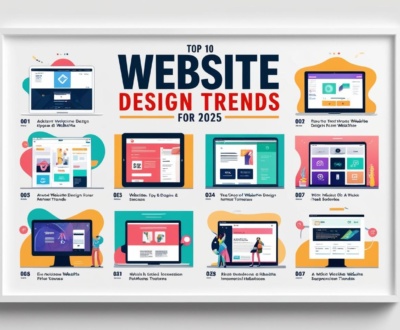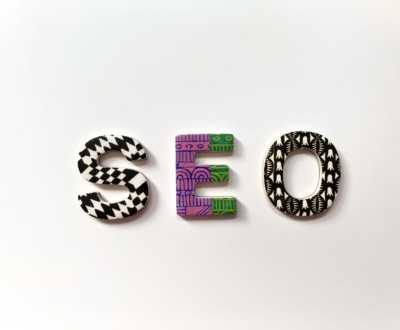Introduction to User-Friendly Design
User-friendly design refers to the principles and practices that prioritize the needs, preferences, and expectations of users while interacting with a website. A user-friendly website provides a seamless experience, ensuring that visitors can navigate the site effortlessly and access the information they seek without unnecessary hurdles. This design philosophy emphasizes a user-centric approach, which is crucial in today’s digital landscape where user experience directly correlates with engagement levels and overall satisfaction.
The importance of user-friendly design in web development cannot be overstated. A well-structured and intuitive site not only enhances user experience but also fosters loyalty and trust. When users can easily find what they need without encountering frustration, they are more likely to return to the site, share it within their networks, or take desired actions such as making purchases or signing up for newsletters. Thus, user-friendly design directly contributes to key business outcomes.
Moreover, businesses that prioritize user-friendly design stand to gain significant advantages in their respective markets. Studies have shown that websites that adhere to user-centric principles tend to experience higher conversion rates and lower bounce rates, resulting in better overall performance. Recognizing this, companies are increasingly turning to experienced web development agencies, such as Bafna Digitech Solution in Pune, which specializes in creating user-friendly websites tailored to meet specific client and customer needs. These agencies combine design expertise with a deep understanding of user behavior, ensuring that the final product not only meets aesthetic standards but also aligns with functionality and usability principles.

Understanding Your Target Audience
Before embarking on the journey of designing a user-friendly website, it is imperative to comprehend the nuances of the target audience. By gathering a deep understanding of potential users, designers can formulate a website that not only meets their needs but also enhances their overall experience. This process begins with conducting thorough research to gather user insights, which can be accumulated through various methods, such as surveys and user personas.
Surveys serve as an effective tool for collecting data directly from users. They can help assess preferences, pain points, and user expectations. Crafting thoughtful questions that encourage open-ended responses will yield richer insights, guiding the design process. Moreover, digital marketing agencies in Pune can facilitate such surveys and help interpret the data effectively. Their expertise allows businesses to ask the right questions tailored to the audience that they aim to engage.
User personas, another vital aspect of understanding an audience, are fictional representations of the ideal users based on data gathered from real individuals. Creating detailed personas enables designers to visualize the traits, motivations, and behaviors of their target audience, ensuring that the website design aligns with user expectations. Utilizing these personas throughout the design process can keep user needs at the forefront, tailoring features and functionalities accordingly.
Incorporating this understanding into the design phase is crucial. Decisions regarding layout, color schemes, and navigation should reflect the preferences and behaviors of the identified user segments. Ultimately, a user-friendly website that resonates with its audience is more likely to lead to increased engagement and conversions. Given this context, collaboration with the best digital marketing agency in Pune can further enhance the outreach to a target audience and ensure that the designed website is user-centered and effective.
Planning the Website Structure
Establishing a clear website structure is fundamental to developing a user-friendly website. A well-organized structure not only improves navigation but significantly enhances the overall user experience. The initial step in this process involves creating a sitemap, which serves as a blueprint of the site’s layout. This visual representation plots out the hierarchy of pages, allowing designers to identify primary sections and sub-sections efficiently. By having a detailed sitemap, teams can ascertain where users will be directed when they navigate through the website.
Once the sitemap is established, the next phase is wireframing. Wireframes are essential for outlining the website’s layout without the distraction of design elements. They provide a clear visual framework that maps out where each webpage component will reside, including menus, content areas, and calls to action. This method allows for the optimization of user flows, ensuring critical information is easily accessible, which is pivotal for enhancing user engagement.
Collaboration is a critical aspect during the planning phase. Engaging with top website developers can offer invaluable insights into technical feasibility and user interface best practices. These professionals can help identify potential gaps in navigation and suggest necessary adjustments to improve functionality. By integrating their expertise, designers can ensure that the website structure aligns with modern user expectations and technological advancements.
In summary, creating a logical website structure involves an organized approach that begins with a sitemap and proceeds to wireframing. Continuous collaboration with skilled developers throughout this process will not only lead to a more intuitive navigation system but also enrich the overall user experience. Ultimately, these steps are vital in fostering a website that meets user needs and encourages successful interactions.
Designing for Accessibility
Designing a user-friendly website requires a strong emphasis on accessibility, ensuring that all users, including those with disabilities, can navigate and interact with the site effectively. Accessibility in web design goes beyond mere compliance with legal standards; it embodies the principle that everyone should have equitable access to information and online services. To achieve this, several key considerations must be addressed throughout the design process.
One major aspect of accessibility is color contrast. Designers must ensure that there is sufficient contrast between text and background colors to enhance readability for users with visual impairments. Utilizing tools that analyze color contrast and adhering to the Web Content Accessibility Guidelines (WCAG) can help in selecting appropriate color combinations. This attention to detail results in an inclusive experience, allowing users with varying abilities to read and comprehend content easily.
Additionally, providing keyboard navigation is essential for individuals who cannot use a mouse. Websites should be designed such that all interactive elements can be accessed using keyboard shortcuts. This involves clear focus indicators, logical tab orders, and ensuring that all functionalities are operable through keyboard controls, thus creating a seamless experience for users relying on assistive technologies.
Moreover, alternative text for images contributes significantly to accessibility. By providing descriptive text for images, designers allow users utilizing screen readers to grasp the content and context of visual elements. This practice ensures that information is conveyed accurately and enhances the overall user experience.
Collaboration with a proficient web development agency, such as Bafna Digitech Solution in Pune, can facilitate the integration of these accessibility principles. Professional expertise is crucial in creating websites that adhere to accessibility standards while also being aesthetically pleasing and functional. Through diligence and a commitment to inclusion, designers can significantly improve the usability of websites for all users, regardless of their abilities.
Creating Engaging Content
Effective content is fundamental to the design of a user-friendly website. High-quality content enhances user experience by offering value, thereby retaining visitors and encouraging them to delve deeper into the site. This section will explore the critical aspects of creating engaging content, including writing compelling headlines, informative copy, and incorporating engaging multimedia elements.
To start, compelling headlines are essential for capturing the attention of users. A well-crafted headline serves as the first point of interaction, influencing whether a visitor will read further or navigate away. Utilizing actionable language alongside clear, specific, and concise phrases can significantly improve user engagement. Phrases that evoke curiosity or offer immediate benefits can pique interest effectively.
Next, informative copy plays a vital role in ensuring that users find what they are looking for. It should provide clear, direct answers to their questions while being accessible and readable. Utilizing bullet points, subheadings, and short paragraphs can enhance readability, making it easier for users to scan and absorb critical information. The focus should be on delivering content that is relevant and valuable to the audience, ensuring their experience is both meaningful and enriching.
In addition to textual content, engaging multimedia elements such as images, videos, and infographics can significantly enhance user interaction on the website. These elements break up text-heavy content and provide visual stimulation that keeps users intrigued. Multimedia content, when used strategically, can reinforce written messages, making complex information more digestible and enjoyable. However, it is crucial to ensure that these elements are optimized for web performance to prevent slow load times, which could adversely affect the user experience.
In conclusion, creating engaging content that combines compelling headlines, informative copy, and appealing multimedia is key to designing a user-friendly website. This integrated approach not only retains users but also encourages them to explore the site further, aligning with effective digital marketing strategies offered by leading agencies. Prioritizing quality content will undoubtedly enhance overall website performance and user satisfaction.
Responsive Design: Meeting User Needs Across Devices
Responsive design is an essential approach in the modern web development landscape, where user experience is paramount. This technique ensures that a website’s layout adjusts seamlessly across various devices, including desktops, tablets, and smartphones. Given the diversity of screen sizes and resolutions, it is crucial for website designers to prioritize responsiveness to enhance usability and accessibility. By adopting a responsive design, a website can provide an optimal viewing experience, allowing users to navigate effortlessly without having to zoom in or scroll excessively.
One core principle of responsive design is the use of fluid grids and flexible images. Fluid grids utilize relative sizing, meaning that layout elements scale proportionally depending on the user’s device. This prevents fixed-width layouts that can lead to awkward interfaces on smaller screens. Additionally, implementing CSS media queries enables developers to apply specific styling rules based on the characteristics of the device being used. This approach helps to tailor the user interface effectively, improving engagement and satisfaction among visitors.
Moreover, it’s vital to consider touch interactions when designing for mobile devices. Websites should not only look good but also function properly with touch gestures. This can include creating larger buttons or optimizing navigation for touch inputs. Involving a seasoned web developer is beneficial in this regard. Their expertise can facilitate the implementation of responsive strategies through code optimization and performance enhancements, ensuring that the website remains fast and responsive across different platforms.
Incorporating responsive design in website development is no longer optional; it is a necessity. As user expectations evolve and more individuals access the internet via mobile devices, creating a user-friendly experience that accommodates various device types becomes imperative for any successful online presence.
Implementing User Feedback
In the realm of website design, user feedback plays a pivotal role in shaping a user-friendly experience. Collecting and analyzing feedback from users is essential for understanding their needs, preferences, and pain points. Effective feedback mechanisms can foster a culture of continuous improvement and allow for iterative design processes. This section will discuss various methods for gathering valuable insights from users after the launch of a website.
One of the most common methods for collecting user feedback is through surveys. These can be embedded directly on the website or sent via email to users post-interaction. Survey questions can cover a wide array of topics, including user satisfaction, site navigation, and overall usability. By incorporating tools such as Net Promoter Score (NPS) or Customer Satisfaction Score (CSAT), designers can gauge user perception and make informed design choices based on quantitative data.
Another effective method is usability testing. This process allows designers to observe real users interacting with the website, identifying any difficulties they encounter. Facilitating sessions that involve task-oriented scenarios can provide valuable insights on how users engage with the website. Observations can highlight usability issues that may have been overlooked during the design phase, ensuring that the final product truly meets user expectations.
Additionally, leveraging analytics tools is essential for understanding user behavior quantitatively. Metrics such as bounce rates, page views, and click-through rates can reveal user engagement levels and identify areas for optimization. By analyzing these analytics data alongside qualitative feedback, a more holistic view of the user experience can be achieved.
At Bafna Digitech Solution, we emphasize the importance of an iterative design process, where user feedback is integral to continual enhancements. By prioritizing user insights, web designers can create a more effective and user-centric website that evolves with its audience, ultimately leading to a more satisfying user experience.
Testing and Quality Assurance
The process of creating a user-friendly website extends far beyond just the initial design and development stages; it culminates in rigorous testing and quality assurance to ensure optimal functionality and user experience. Quality assurance is critical as it verifies that the website operates seamlessly across various devices and browsers. This stage plays a pivotal role in identifying potential flaws and areas of improvement before the website goes live.
One of the fundamental methods employed during testing is A/B testing, which involves comparing two versions of a webpage to determine which one performs better in terms of user engagement and conversion rates. This approach allows designers and developers to make data-driven decisions, refining elements such as layout, color schemes, and calls to action based on real user feedback. Additionally, usability testing is conducted to assess the website’s ease of use. This form of testing involves gathering real users to navigate the site, subsequently identifying usability issues that may hinder the overall visitor experience.
Performance assessments also play a crucial role in the quality assurance process. These assessments evaluate the website’s loading speed and response times, which are essential metrics impacting user satisfaction. A slow-loading website can significantly detract from the user experience, leading to higher bounce rates. Collaboration with the best web development agency in Pune can greatly enhance testing efforts, as these agencies often possess specialized knowledge in industry standards and tools. Engaging their expertise ensures that comprehensive testing protocols are implemented, consistently meeting quality standards throughout the website development lifecycle.
In conclusion, rigorous testing and quality assurance are vital to the success of a user-friendly website. Employing diverse testing methodologies establishes a solid foundation for an engaging online presence.
Maintaining and Updating Your Website
After launching your website, the process does not conclude; rather, it transitions into a phase that emphasizes the importance of maintenance and updating. Regular updates play a crucial role in ensuring the website remains user-friendly and aligned with current standards. First and foremost, routine content refreshing is essential for keeping the information relevant and up-to-date. This not only helps in retaining user interest but also contributes positively to search engine optimization (SEO), making your website more discoverable by potential visitors.
In addition to content updates, monitoring user engagement is vital. This involves analyzing visitor behavior through metrics such as bounce rates, average session duration, and click-through rates. By utilizing tools like Google Analytics, webmasters can gain insights into how users interact with the website. Understanding these metrics allows for adjustments that can enhance user experience (UX), such as redesigning navigation or adding new features that respond to user demand.
Moreover, ensuring technical updates such as software patches, plugins, and theme updates is fundamental in maintaining a secure and functional website. Outdated software can lead to vulnerabilities and potential breaches, compromising user data and trust in your site. Regularly assessing these technical aspects is essential for sustaining a safe environment that users feel comfortable navigating.
Engaging professional website services for maintenance can take this burden off your shoulders. These experts can perform routine audits, provide tailored updates, and offer insights into best practices for user engagement. Furthermore, they can assist in implementing A/B testing to determine which layout, content, or features yield the best engagement results. Through proactive maintenance and improvement, a website can continuously evolve, ultimately enhancing the user experience over the long term.
About us and this blog
We are a digital marketing company with a focus on helping our customers achieve great results across several key areas.
Request a free quote
We offer professional SEO services that help websites increase their organic search score drastically in order to compete for the highest rankings even when it comes to highly competitive keywords.
Subscribe to our newsletter!
More from our blog
See all postsRecent Posts
- Best Website Design Trends 2025 – AI, Dark Mode & UX Innovations February 9, 2025
- Step-by-Step Guide to Designing a User-Friendly Website January 21, 2025
- Top 10 Website Design Trends to Elevate Your Business in 2025 January 21, 2025










